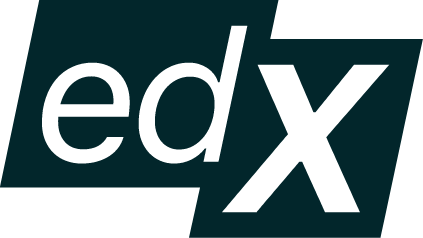
At its core, UX/UI design is user-centric. Professionals in this field must be perceptive and agile, as they observe and react to changing audience needs and preferences. In other words: in this domain, experience is everything.
Given their focus on digital product performance and usability, UX/UI teams often adopt a “seeing is believing” mindset throughout the hiring process.
That being said, we believe that one of the best ways to showcase your UX/UI skill set is through a comprehensive, personalized, and user-friendly portfolio.
In this guide, you will discover the value of a UX/UI portfolio and learn how to curate one that captures the employer’s interest while demonstrating your unique skills, expertise, and creativity.
Let’s start with the basics and then dive into best practices. Feel free to jump to the topic that interests you most.
- What is a UX/UI portfolio?
- Why do employers care about my portfolio?
- How do I set myself up for success?
- Components of a competitive portfolio
- Create your UX/UI portfolio
What is a UX/UI portfolio?
A UX/UI portfolio is a digital presentation of an individual’s contributions in the areas of user experience (UX) and user interface (UI) design — and sometimes even a mix of both! It serves as a visual narrative of the professional journey, featuring case studies, design samples, methodologies, and so much more.
UX/UI professionals often use portfolios to actualize and contextualize previous or ongoing work. This is especially common for individuals at a non-leadership level.
Pro tip:
By providing evidence of your work in a portfolio, you provide tangible evidence to reinforce claims made in other career materials and branding tools like your resume, cover letter, or LinkedIn profile. It showcases important soft skills like attention to detail and user empathy, highlights essential technical skills, and builds trust with employers and clients.
The benefits of a UX/UI portfolio include:
- Marketing your viewpoint to employers and clients, helping them envision the work you can deliver.
- Demonstrating your unique value as an individual and distinguishing you from your peers.
- Illustrating your personal brand freely and delivering on promises of high-quality and comprehensive work.
- Offering you a sandbox to experiment and problem solve creatively — even for hypothetical scenarios or at real companies where you have no stake.
- Building on your existing skill set, centered around a topic you know best — your professional worth and experience!
A well-constructed UX/UI portfolio tells your story to employers, clients, and, frankly, anyone else who’s looking. It highlights the significance of meaningful user experiences and, as a result, underscores your industry expertise.
Expert advice
“A portfolio stands out because it’s like your creative showcase. It’s where you put your actual work on display—projects you’ve done, designs you’ve crafted, real evidence of your skills. On the flip side, a resume and cover letter are more like your written introductions, summarizing your qualifications and experiences in words. So, while a resume tells, a portfolio shows.”
– Irene T., career expert at edX

Why do employers care about my portfolio?
Thanks to online hiring, applying for jobs is just a few clicks away, but along with that convenience comes increased competition, especially in a flourishing field like UX/UI.
Employers often have to sift through hundreds of profiles to narrow down a qualified pool of applicants for a single role. While your resume provides a concise overview of your skills and experience, your portfolio presents an opportunity to showcase your technical know-how and personality—allowing employers to fully grasp how you could seamlessly integrate into their company, fulfill a role, or enhance their team.
Portfolios connect the dots for employers looking to hire UX/UI professionals. They provide comprehensive insights into your skills, methodologies, and perspective. In a field that prioritizes the user’s experience, UX/UI portfolios are indicative of your understanding of the work at large.
Here are some key insights that employers gain from UX/UI portfolios:
Design skills and competencies — Your portfolio offers a comprehensive look into your design choices, including everything from font types to user interfaces. This helps employers assess the quality, aesthetics, and functionality of your designs to gain a greater understanding of your design skills, taste, and competencies.
Problem-identification and -solving skills — The case studies and projects that you feature in your portfolio should detail challenges faced or problems you’ve identified in a product, as well as how you’d tackle them. This gives employers an idea of your abilities in the areas of discretion, analysis, and creative problem solving.
User empathy and understanding — Your UX/UI portfolio should feature user research and audience recognition, which demonstrates your empathy and understanding when it comes to user needs and preferences. This is especially important for employers, as it helps them visualize how you’d utilize the user perspective in your work.
Design process and methodologies — When you outline project descriptions and documentation in your portfolio it provides insights into your design process and methodologies. This helps employers assess whether you follow a structured approach, conduct user testing, and iterate on designs based on feedback.
Adaptability and willingness to grow — Your portfolio provides a unique chance to demonstrate your ability to learn from mistakes and pivot in response to areas needing improvement. In the fast-paced UX/UI field, this showcases your adaptability, willingness to grow, and capacity to embrace new technologies, design trends, and industry shifts to potential employers.
Pro tip:
Remember, your career belongs to no one but you. This means that the job search process should always be a two-way street. While you certainly want employers to appreciate your portfolio, it’s equally crucial for you to feel a sense of connection to it. Embrace opportunities for reasonable personalization and customization, like hidden surprises that reflect your identity. This will help you attract employers who resonate with your brand, values, and interests.
How do I set myself up for success?
In the world of UX/UI design, where creating exceptional user experiences is the name of the game, standing out is crucial. That’s where your UX/UI portfolio plays a pivotal role.
It’s not just a collection of pretty designs; it’s your opportunity to show off problem-solving skills, creativity, and your passion for creating seamless and personal experiences for users. Think about it: this is one of the only chances, apart from interviews, that you have to show employers who you are and what you are capable of, all at once.
As you are preparing to create your portfolio, we want you to concentrate on a few tips that will set you up for success:
Find balance between personalization and user empathy — Don’t sacrifice usability for aesthetics. Mix your personal style with user-centric and accessible design to connect with users and elevate their experience with your brand.
Showcase variety and reach — Try to diversify your featured projects and case studies. Demonstrate your strengths and problem-solving skills across different design challenges and user bases.
Focus on the ends and the means — For employers, your outcomes are only as valuable as the decisions that came before them. Highlight final designs and the processes you built to get there. This showcases desirable skills that many employers are looking for.
Consider your audience — Tailor your portfolio to its audience (employers, clients, peers) and prioritize feedback. This puts what matters most to them at center stage and creates a compelling experience. After all, a portfolio is meant to be seen.
Always remember, quality over quantity. Employers are more interested in seeing the value you bring and the real-world impact of your work than the number of projects you completed.
Components of a competitive portfolio
A competitive UX/UI portfolio acts as a testament to the value, skills, and passion you bring to your work and beyond. Now, you might be wondering how to achieve this.
While the specifics vary from person to person, there are some essential elements you shouldn’t leave out — not to mention, certain things that you should. Consider how you might incorporate the fundamental sections listed below, as they provide a solid foundation for showcasing your expertise in the world of design.
About section
Your “About” section is so much more than what you do, where you’re located, and what you like. It should provide a snapshot of who you are, what you’ve experienced, what your interests are, and how all those things factor into your career decisions and opportunities.
This is where it’s important to demonstrate the parts of your life or personality that you’d like employers to recognize — especially ones that might not come across in an interview or on your resume.
Pro tip:
Put yourself in the shoes of an employer: What interesting information would make you feel connected to an interviewee? Would you be more compelled to talk to a qualified candidate with fascinating interests and life experiences? Use that perspective when crafting your “About” section and deciding what you want your audience to know about you.
For instance, do you have an interesting hobby or pet? Include a few details about yourself outside of work that provide evidence of your creativity, passion, or work ethic.
Additionally, you might want to consider adding a quality photo of yourself to establish a personal connection with your viewers. The formality of this image depends on the specific role and industry you’re targeting — and the way you’d like to portray your own personal brand. Although you might prefer having this photo taken by a professional, it isn’t necessary. Simply make sure that you are in focus, have good lighting, and have chosen a suitable background.
Use these sample headshots for inspiration:




Here are a few additional tips to guide you as you craft your “About” section:
- Be explicit about who you are. Make sure to include your name and any pertinent information that helps to paint your picture. Consider including a punchy tagline that effectively conveys your narrative in a succinct manner. This tagline can serve as a quick means of communicating your unique strengths, goals, and passions. For example, you might consider something like, “Dedicated design professional committed to optimizing the user experience, one click at a time.”
- Include a concise list of 5 skills or proficiencies. Be brief. Give viewers an idea of the impact you are looking to make in the realm of UX/UI. By listing skills or proficiencies of importance, you will help set the stage for other, more demonstrative, parts of your portfolio.
Pro tip:
In UX/UI, storytelling is paramount. Your portfolio, whether intentional or not, becomes the most effective medium for conveying your personal narrative. Ensure that your “About” section functions as the central thesis, linking seamlessly with other sections of your portfolio to craft a compelling and comprehensive story.
Work samples and case studies
Work samples and case studies are arguably the most important part of your portfolio; expect some viewers to skip to this section without even reading your bio. Continue reading below where we outline the steps necessary to build your UX/UI portfolio.
Expert advice
“The portfolio is a great opportunity to use visuals to showcase your work such as screenshots, as well as elaborate and provide details about your process and how you approached a project. Use bullet points, short paragraphs and visuals to make it easy to read while also providing valuable information.”
– Deanna P., career expert at edX

Contact information
It’s really important to make sure that your UX/UI portfolio is user-friendly. A big part of that is having a clear, easy-to-find section with your necessary and relevant contact details. In this section, we strongly advise you to include your email address so that any potential clients or employers can reach out to you. You might also want to include optional things like:
- Your phone number
- Your city or general location
- Your social media accounts and links
- Your resume or previous work testimonials
- Your blog
Similar to other career materials, there are some details we recommend omitting from your contact section. For safety reasons (among others), we strongly advise against listing your complete address. Furthermore, we suggest that you exercise discretion when linking to social media accounts. While it’s crucial to showcase your tech and social media proficiency in the realm of UX/UI, it’s also important that you only provide links to public accounts featuring content suitable for a professional audience.
Create your UX/UI portfolio
Here are the steps you can take to build your UX/UI portfolio:
When building a UX/UI portfolio, one of the biggest pieces of the puzzle is finding an effective hosting platform. The host platform you choose should be a tool for your success, not a limitation that hinders it. There are numerous platform choices, regardless of where you are in your journey.
Before selecting your hosting platform, consider the story you want to convey to users. If you’re tech-savvy, you can build a custom website from scratch. Beginners can opt for platforms with customizable options and relevant design templates. The key is ensuring your host platform supports the style of work you want to showcase — and that you’re able to create a portfolio on a timeline that makes sense for your career journey.
Popular options like WordPress and Google offer free hosting and various design templates. For budget-friendly choices, explore Wix or Squarespace, allowing you to create a free or low-cost website with a subdomain (e.g., yourname.wix.com) that you can upgrade later. Additionally, consider using multiple tools if it suits your needs. For example, you can use a tool like Figma to demonstrate specific elements of your portfolio, while hosting on a traditional website platform like Wix.
Pro tip:
A UX/UI portfolio is typically presented as a web page or custom website; however, purchasing a domain can be expensive. A custom domain name makes a website appear more polished and professional, but it is not mandatory. Consider alternatives that make sense in your line of work. For instance, presenting your UX/UI portfolio as a Figma file, instagram profile, or slide deck could be an effective way to create a prototype for your future web-based portfolio.
Before you start writing and building your work samples, we recommend taking a moment to outline your site map, including your page titles. Most portfolio websites have a simple site structure with just three to five pages. A simple Google search will offer some UX/UI portfolio examples to inspire your outline.
If you’re using a content management system, the easiest way to get started is by using a template. Remember, a template is yours to customize – you aren’t locked into page titles or layouts – but you’ll save time by starting with something close to what you want.
As mentioned above, your “About” section should use clear, dynamic, and meaningful copy to engage viewers and establish your narrative. Your writing style here can speak volumes about your personality! Like a professional brand, your personal brand should be concise, cohesive, and consistent, evident through written voice and tone, visuals, and how you present your work. For best results, be succinct, choose action verbs, and avoid adverbs and hyperbole in your copy.
Once you’ve set your narrative and provided necessary context, select 3-5 projects that represent your best work and demonstrate the diversity of your skills. Depending on your area of expertise, this could include academic, professional, and personal projects in areas such as:
- User research
- Wireframing
- Product development
- Website reskinning
- Content strategy
Pro tip:
Portfolios can seem daunting for newcomers to a field like UX/UI. If you lack professional experience, understand that personal and hypothetical projects hold value. Seek opportunities with friends of friends or local businesses, participate in hackathons, and identify gaps in products or design processes in your daily life. The opportunities are endless.
Each project example should feature an image, usually of the product, project plan, or design process. Ensure that all images can be enlarged for readability. For live web content or products, provide links. Write succinct descriptions of your role, process, and results. And, for maximum impact, frame your portfolio projects within the STAR Method: Situation, Task, Action, and Result and use metrics as needed to highlight your work’s impact.
By taking these steps in your case studies, you’ll tell a story of your specific role and actions taken to identify problems, devise creative solutions, and track measurable results. This confirms your understanding of strategy and performance, and willingness to iterate when necessary.
Pro tip:
Collaboration and transparency go a long way in a field like UX/UI. Specify when you’ve worked alone on projects and when you’ve worked in groups. In this field, teamwork is common, and your ability to give others credit when it’s due speaks volumes about your character and collaboration skills.
Before you publish your site, solicit feedback from a handful of people invested in your success. Share your test site link with mentors, friends, and people you know in the industry. Ask for specific feedback and incorporate it (with reasonable discretion) to improve your portfolio.
Now you are ready to publish your portfolio! Fight the urge to wait until your portfolio is perfect to publish. While it should be polished and free of errors, it will be a living document that you continue to update and improve over time. Remember to link your live portfolio to your social media platforms and resume.



